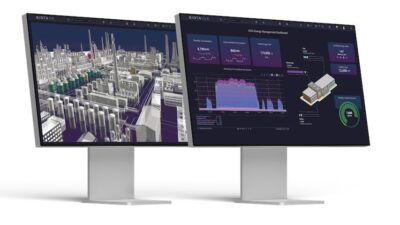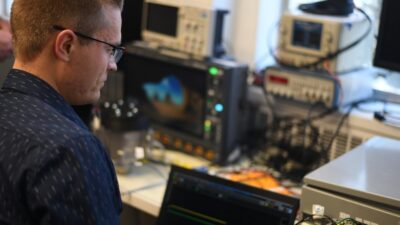PC-based control software demonstrated its migration toward Microsoft Windows NT, OPC (OLE for Process Control), and Visual Basic, during NMW.Microsoft (Redmond, Wa.) representatives explain more industrial automation software is using Visual Basic for Applications (VBA) scripting, with about 30 companies shipping applications and about 100 companies signed on.
PC-based control software demonstrated its migration toward Microsoft Windows NT, OPC (OLE for Process Control), and Visual Basic, during NMW.
Microsoft (Redmond, Wa.) representatives explain more industrial automation software is using Visual Basic for Applications (VBA) scripting, with about 30 companies shipping applications and about 100 companies signed on.
VBA benefits include tighter integration with Microsoft-compatible applications, helping users to easily customize software, and allowing software vendors to compete on core functionality, explains Michael Gilbert, Microsoft’s technical product manager, developer tools marketing.
Software using VBA scripting includes Iconics ‘ (Foxborough, Mass.) TrendWorX32 (see photo), a 32-bit, real-time historical trending product that’s ActiveX- and OPC-compliant. Rockwell Software (West Allis, Wis.) announced that RSView32 is fully compliant with OLE (Object Linking and Embedding) for Process Control, a standard for software interoperability. Version 6 is also fully integrated with Microsoft VBA (Visual Basic for Applications). With VBA, RSView32 can interact directly with Microsoft Office, BackOffice, and other Rockwell Software applications. The VBA implementation is certified with VeriTest, an independent testing organization. Other VBA control software users include Intellution , Nemasoft , OSI , and PID .
Steeplechase ‘s (Ann Arbor, Mich.) VLC Diagnostic Manager claims to reduce cost of machine diagnostics up to 90%. It helps users quickly troubleshoot and repair via step-by-step instructions, using any combination of video, drawings, and notes. Users can also create programs using the web software interface (See also Control Engineering , April 1998, Up Front, p.3).
Siemens Energy & Automation ‘s (Alpharetta, Ga.) Simatic WinAC (Windows Automation Center) tries to take the risk out of moving to PC-based control by maintaining the same look and feel of S7 PLCs. The PC-based solution also performs process visualization or open-loop control on one hardware platform. Deterministic behavior and data security beyond standard Windows NT implementation requires hardware, such as the Simatic WinAC Pro package with accelerator board.
Laboratory Technologies Corp. (Wilmington, Mass.) introduced version 10.1 of its PC-based process control and data acquisition software, ControlPro, with application access via the web, fast Intel Pentium support, and support for more than 1,000 I/O devices from more than 50 manufacturers.
Already going strong at the control layer, Windows NT is also working its way into manufacturing execution system (MES) software. Camstar (Campbell, Calif.) is working on a complete rewrite of its MES software on Microsoft Windows NT. The new offering is expected to be unveiled mid-July and delivered in September. Others MES software ports to Windows NT, but this is the first on Windows NT, says David Cope, Camstar’s marketing vp.
Among many OPC-compatible efforts, Rockwell Software ‘s (West Allis, Wis.) RSServer OPC Toolkit takes approximately 400 DDE-developed drivers (within an RSServer Toolkit) and upgrades them to OPC—OLE (object linking and embedding) for Process Control. In related news, Rockwell Automation in January 1998 expanded investments in motion control and operation interface software.
Afcon Control and Automation (Schaumburg, Ill.) used a connection to an Israeli cement plant to demonstrate online remote monitoring using its SCADA and human-machine interface software product, P-CIM.
Schneider Automation (North Andover, Mass.) announced its Transparent Factory, a web-based approach to factory data management delivering plant floor data through commercially available web browsers. Web-enabled plant floor devices publish data using LiveData technology from Cycle Software . Any client device can subscribe to the data. Transparent Factory also incorporates technology from Sun Microsystems (Java Control and Automation Framework) along with Ethernet as the networking protocol down to the I/O level.


